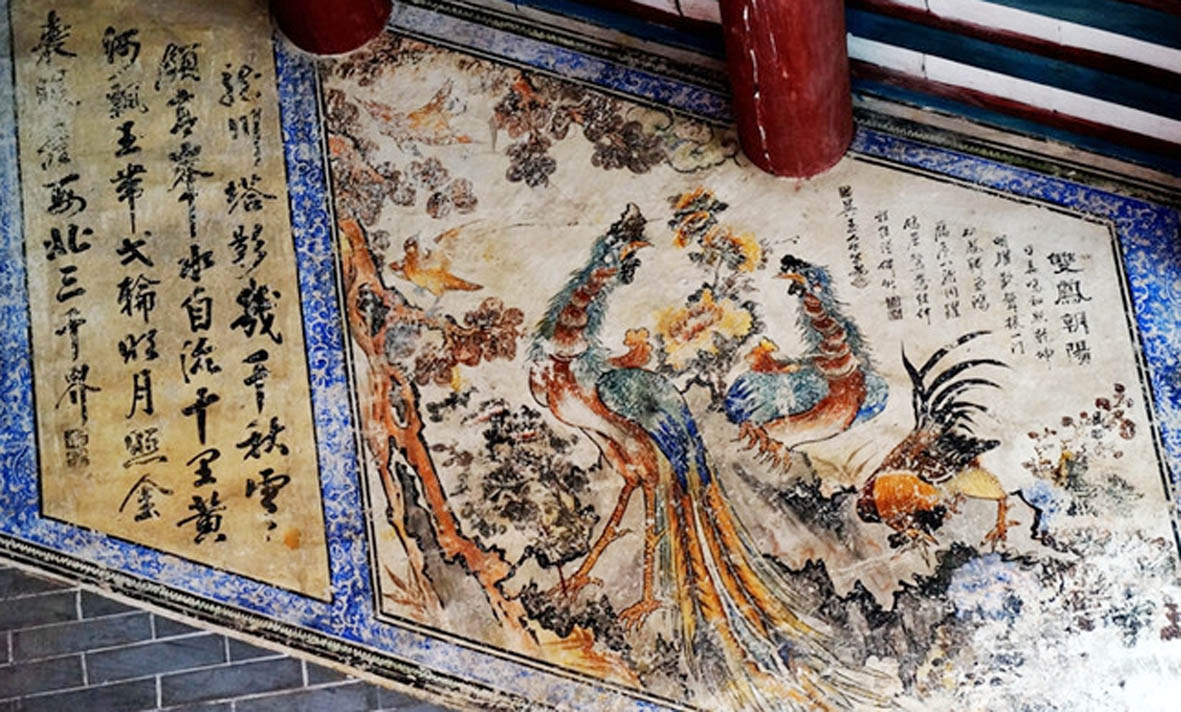Guangfu murals shaped local identity

Rich in color, Guangfu murals decorated ancestral halls, temples and other public spaces.
Murals are a common sight on traditional Guangfu, or Cantonese, architecture from the Qing Dynasty (1616-1911) and the Republican period (1912-49). Most of these murals were painted on doors, corridors and back halls of ancestral halls and temples.
Relatively few have been found on residential buildings, and only parts of these murals have been preserved— usually on the outside walls of the front door. While some Guangfu murals have deteriorated over time, others are in excellent condition, featuring lovely colors as well as clear and complete shapes. It is conservatively estimated that there are thousands of murals from the Qing Dynasty and the Republican period in the Guangzhou area alone. These are significant cultural relics that have been completely ignored for a long time.
Guangfu murals depict a variety of figures, flowers, birds, landscape, dragons, lions and even Chinese calligraphy. Most of the figure paintings tell a story. Each presents a complete story rather than a part that is serialized across several frames.
Like other varieties of Chinese murals, Guangfu murals serve as a vehicle for Chinese traditional cultures. They involve multiple fields of traditional Chinese culture, including classical ancient Chinese legends, scholarly anecdotes and interesting historical stories.
In the Qing Dynasty and the Republican period, loyalty, filial piety, benevolence and righteousness composed the kernel of traditional Guangfu culture, which brought local people together. This spirit permeates the style of traditional murals on ancestral halls and temples in Guangzhou area.
These murals were by no means the crude doodles of ancient people. These structures were sacred in local society, and the privilege of painting them was reserved for some of the finest craftsmen. Through placement in a prominent public space, the murals played a significant role in transmitting traditional values, morals and cultures.
Huang Liping is from the Guangdong Cultural Relic Expert Protection Committee.
